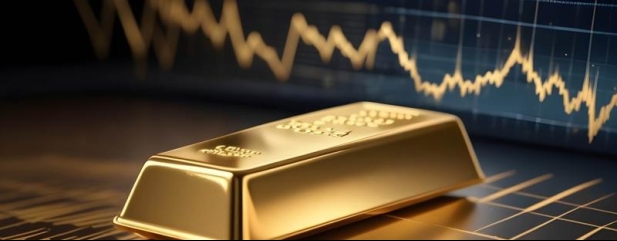Archived article
Please note that tax, investment, pension and ISA rules can change and the information and any views contained in this article may now be inaccurate.
Why investors should buy this gold tracker

Xtrackers IE Physical Gold ETC Securities (XGDU) $35.61
Assets: £2.43 billion
It may have beaten a hasty retreat from recent record highs as concerns about an escalating conflict in the Middle East have eased but gold prices are still forecast in many quarters to make further gains from here.
For investors concerned about geopolitical and economic risk, as inflation shows signs of being more entrenched and a divisive US presidential election looms, 2024 has seen the precious metal’s safe haven credentials underlined. You don’t need to be a gold obsessive to understand that it can be a useful source of protection and diversification in a portfolio.
So, what is the best (and cheapest) way to gain exposure to this precious metal? The answer is simple. Through an ETC (exchange-traded commodity) that tracks physical gold.
The Xtrackers IE Physical Gold ETC Securities (XGDU) is currently the cheapest ETC to invest in physical gold around with an ongoing charge of just 0.11%.
An ETC has the security of being backed by the physical gold itself and the investor has the benefit of owning physical gold at a significantly reduced cost compared to doing so directly and without having to worry about storage or any other associated hassle. Over a three-year period, the ETC has returned 50.2% to investors, and over the past year 19.7%.
Gold, which has very limited practical applications, tends to be in demand during periods of economic or geopolitical strife, when inflation threatens paper currencies or there are significant falls in bond and equity markets.
Its status as a safe-haven asset is based on its historic role as a store of value and the fact that, unlike currencies, its value cannot be manipulated through adjustments to interest rates. It is also rare and tightly supplied, you can’t create it at will.
Another big driver for gold in recent times is demand from central banks as they seek to diversify their reserves. Gold’s inverse relationship with the US dollar, another major reserve asset, is an element of its appeal for central banks. When the dollar drops in value, gold typically rises, enabling central banks to protect their reserves when markets are volatile.
These factors lie behind some bullish forecasts from investment banks with Goldman Sachs predicting a price of $2,700 per ounce by the end of 2024. Risks to gold include a resolution to the wars in the Ukraine and Middle East and a diminution of central bank demand.
Important information:
These articles are provided by Shares magazine which is published by AJ Bell Media, a part of AJ Bell. Shares is not written by AJ Bell.
Shares is provided for your general information and use and is not a personal recommendation to invest. It is not intended to be relied upon by you in making or not making any investment decisions. The investments referred to in these articles will not be suitable for all investors. If in doubt please seek appropriate independent financial advice.
Investors acting on the information in these articles do so at their own risk and AJ Bell Media and its staff do not accept liability for losses suffered by investors as a result of their investment decisions.
Issue contents
Daniel Coatsworth
Feature
- Tap into micro caps for a slice of UK innovation
- Chinese manufacturing PMI data needs to be closely watched
- Emerging markets: China rebound, Indian elections and valuations
- Small World: read about Gresham Technologies, T Clarke, REDX Pharma and more
- Are corporate spin-offs a good hunting ground for profitable investments?
- Dividend Machines
- Why Darktrace is getting exciting again
Great Ideas
Investment Trusts
News
- Ocado shares wobble after M&S relationship turns sour
- United Airlines soars on upgrades despite Boeing-related hit
- Retail sales not as bad as reported, while consumer confidence rises slowly
- Warnings from chip giants cast doubt over semiconductor optimism
- FTSE 100 finally joins the new-highs club despite being unloved for years
 magazine
magazine








